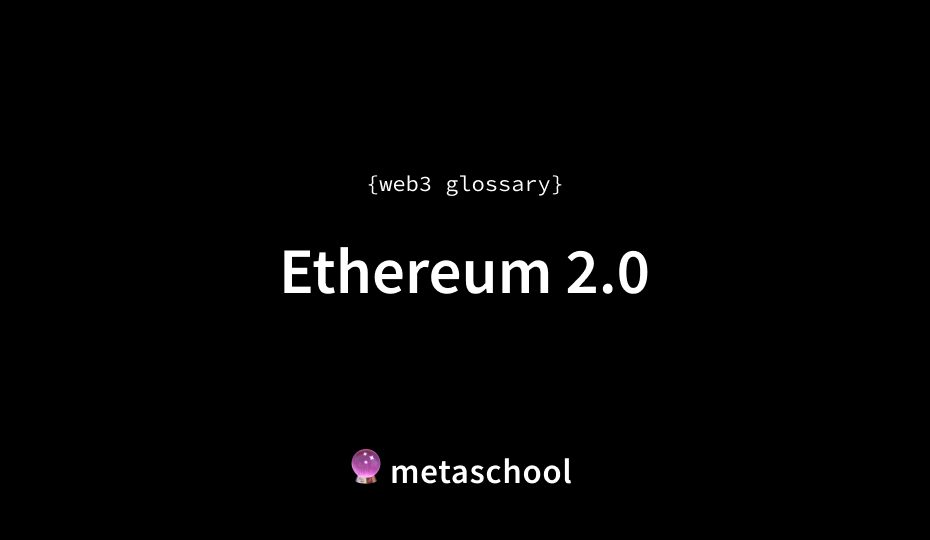Table of Contents
What’s Ethereum 2.0?
Ethereum 2.0 also known as ETH2 is the upgrade in the consensus mechanism of the Ethereum Blockchain from Proof of Work (PoW) to Proof of Stake (PoS).
The long-awaited event in which Ethereum converted into Ethereum 2.0 is called ‘The Merge‘, which happened in September 2022.
These changes were particularly done to increase the scalability and security of the network to make it capable of handling multiple transactions simultaneously. Ethereum 2.0 introduces a new PoS consensus mechanism, which is more energy-efficient and allows the network to process more transactions per second (TPS).
It also includes features such as sharding and cross-shard communication, which are designed to improve the scalability of the Ethereum network.
From Ethereum to Ethereum 2.0’s Beacon Chain
For the upgrade to happen, a new structure was built alongside the main Ethereum Blockchain known as the Beacon Chain.
The Beacon Chain introduces the gossip protocol, under which nodes periodically transmit status information regarding themselves and other nodes they are aware of.
It also provides consensus logic which makes the Ethereum Blockchain even more secure.
For Ethereum 2.0 it was necessary to instruct and train the Beacon Chain in a way that it directly accepts transactions from the main Ethereum Chain and also organizes these transactions in the Ethereum blockchain using the PoS consensus mechanism.
Eth 2.0 and eWASM
Remember Ethereum Virtual Machine (EVM)? eWASM is similar to that. After the exclusive roll-out, Eth 2.0 will support both EVM and eWASM (Ethereum flavored WebAssembly).
Compared to EVM, this one is much faster and supports a number of languages such as C++. EVM also supports different languages other than Solidity.
It is based on WebAssembly, which is a popular standard for executable code on the web. Compatible with new technologies such as sharding and PoS, eWASM is also quite interoperable and flexible.
Main differences between Ethereum and Ethereum 2.0
| Feature | Ethereum | Ethereum 2.0 |
| Consensus mechanism | PoW | PoS |
| TPS | 15-45 TPS | 100,000 TPS |
| Transaction Fees | Usually higher | Comparatively lower |
| Staking | You don’t get paid for staking Ether | You get paid for staking Ether |
| Smart contracts | Supports EVM | Can support both EVM and eWASM |
Other differences between the two different types include:
- The upgradation of Ethereum 2.0 was done to make the chain even more secure. There are approximately more than 16,000 validators of a block which make the network decentralized and secure.
- In the old Ethereum, PoW miners had to compete with each other to solve a mathematical problem and whoever did it first would be able to validate the block. In the newly introduced PoS mechanism, the Ethereum Blockchain itself will determine the validators of blocks.
- In Ethereum only 15 transactions could be done per second. The shard chain was implemented to increase transaction speed. Eth 2.0 doesn’t necessarily need a child chain.
Imagine Ethereum is a spaceship that isn’t quite ready for an interstellar voyage. With the Beacon Chain, the community has built a new engine and a hardened hull. After significant testing, it’s almost time to hot-swap the new engine for the old mid-flight.
The Ethereum Foundation
In conclusion, Eth 2.0 is one of the big things in web3. It supports sharding, and PoS and has a different virtual machine – eWASM – altogether. It is definitely a positive move towards a sustainable decentralized ecosystem.
